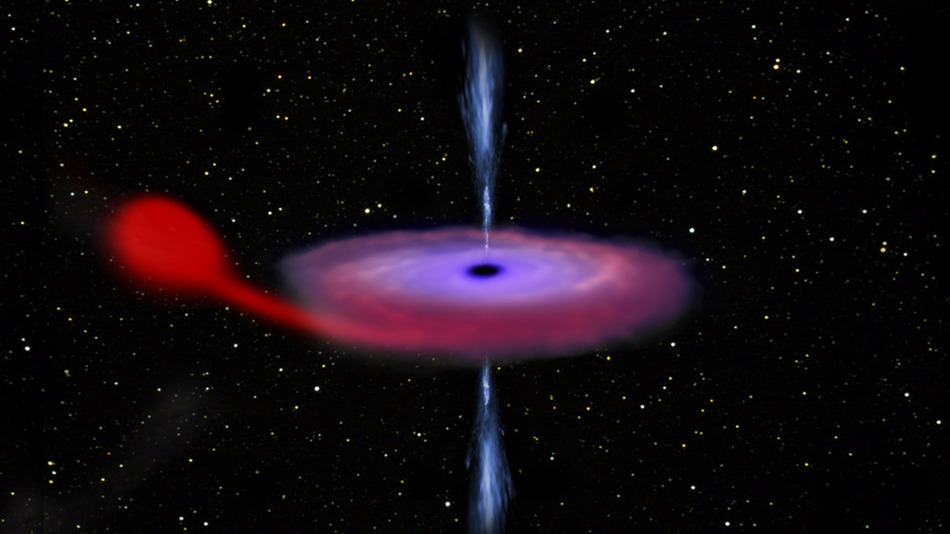A huge black hole that has been dormant for the past 26 years have come to life and, like any living entity that has slept for too long, is enormously hungry. The black hole is now addressing its hunger pangs by gobbling down its companion star, an activity that has gotten astronomers around the globe massively excited because it has been more than 20 years since they have seen this kind of activity from these particular bodies in deep space.
The enormous black hole, called V404 Cygni, lying some 8,000 light years away in the Cygnus constellation of the Milky Way, has been silent for the better part of the last quarter century. About 12 times larger than the sun, it is part of a binary system with a star that has half the mass of our sun. Material from this star gets collected in a disk around the black hole. Astronomers believe that as more material accumulates, the disk overflows and triggers an intense feeding period. The material heats up and appears extremely bright in the X-ray wavelength.
The black hole’s sudden activity was first detected on June 15 by the Burst Alert Telescope of NASA’s 11-year-old Swift satellite. The European Space Agency’s Integral satellite and other spacecrafts, including the International Space Station’s Monitor of All-sky X-ray Image (MAXI) camera, are now studying the phenomenon’s X-ray bursts. The X-ray data show huge variability, with intense flares lasting only a couple of minutes, as well as longer outbursts over time scales of a few hours.
“The behaviour of this source is extraordinary at the moment, with repeated bright flashes of light on time scales shorter than an hour, something rarely seen in other black hole systems,” said Erik Kuulkers, integral project scientist at ESA. “In these moments, it becomes the brightest object in the X-ray sky – up to fifty times brighter than the Crab Nebula, normally one of the brightest sources in the high-energy sky.”
What makes V404 Cygni particularly special is that astronomers have not yet discovered many other black hole binary systems, which have just two objects, in this case a star and a black hole, quite like it. NASA’s Chandler X-ray Observatory previously observed a napping black hole that was dormant despite ample material around the object. Another black hole, P13, was discovered displaying similar greediness last year.
As the bursts continue, astronomers hope to exploit them to investigate the mechanisms that give rise to powerful jets of particles, moving away at velocities close to the speed of light, from the black hole’s accretion disc. They expect observations to continue into July.




